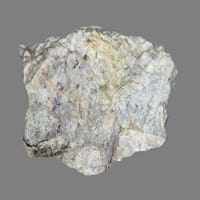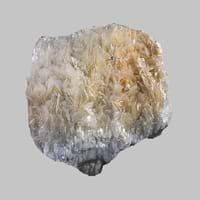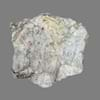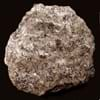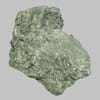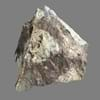Skarn and Talc carbonate
Definition
Definition
Skarns are formed during regional or contact metamorphism and from a variety of metasomatic processes involving fluids of magmatic, metamorphic, and/or marine origin
Talc carbonate is nothing but a rock sequence or a mineral composition found in metamorphic ultramafic rocks.
History
Origin
USA, Australia
China, USA, Middle east
Discoverer
Tornebohm
Unknown
Etymology
From an old Swedish mining term originally used to describe a type of silicate gangue or waste rock.
From medieval Latin, talcum
Class
Metamorphic Rocks
Metamorphic Rocks
Sub-Class
Durable Rock, Hard Rock
Durable Rock, Soft Rock
Family
Group
Not Applicable
Not Applicable
Other Categories
Fine Grained Rock, Opaque Rock
Fine Grained Rock, Opaque Rock
Texture
Texture
Earthy, Mud-rich, Rough
Very Soft
Color
Black, Brown, Colourless, Green, Grey, White
Colourless, Grey, White
Maintenance
Less
Less
Durability
Durable
Durable
Water Resistant
Yes
Yes
Scratch Resistant
Yes
Yes
Stain Resistant
No
No
Wind Resistant
Yes
No
Acid Resistant
Yes
No
Appearance
Dull
Soft
Uses
Architecture
Interior Uses
Decorative Aggregates, Entryways, Interior Decoration
Decorative Aggregates, Interior Decoration
Exterior Uses
As Building Stone, As Facing Stone, Garden Decoration, Paving Stone
Garden Decoration
Other Architectural Uses
Curbing
Powder
Industry
Construction Industry
As a Flux in the Production of Steel and Pig Iron, As a Sintering Agent in Steel Industry to process Iron Ore, As Dimension Stone, Gold and Silver production, Manufacture of Magnesium and Dolomite Refractories
Source of calcium
Medical Industry
Not Applicable
Taken as a Supplement for Calcium or Magnesium
Antiquity Uses
Artifacts, Monuments, Sculpture
Artifacts, Jewellery, Monuments, Sculpture, Small Figurines
Other Uses
Commercial Uses
Creating Artwork, Gemstone, Jewelry, Metallurgical Flux, Source of Magnesia (MgO)
Manufacturing of baby powder
Types
Types
Endoskarns
Not Available
Features
Host Rock for Lead, Zinc and Copper Deposits
Easily splits into thin plates, Generally rough to touch, Host Rock for Lead
Archaeological Significance
Monuments
Used
Used
Famous Monuments
Data Not Available
Data Not Available
Sculpture
Used
Used
Famous Sculptures
Data Not Available
Data Not Available
Pictographs
Not Used
Used
Petroglyphs
Not Used
Not Used
Figurines
Used
Used
Fossils
Absent
Absent
Formation
Formation
Due to change in environmental conditions, rocks are heated and pressurized deep inside the Earth's surface. Skarn is formed from the extreme heat caused by magma or by the intense collisions and friction of tectonic plates.
Due to change in environmental conditions, rocks are heated and pressurized deep inside the Earth's surface. Talc Carbonate is formed from the extreme heat caused by magma or by the intense collisions and friction of tectonic plates.
Composition
Mineral Content
Calcite, Enstatite, Epidote, Garnet, Magnetite, Pyroxene, Titanite
Carbonate, Chlorite, Magnesium
Compound Content
Au, CaO, Carbon Dioxide, Cu, Fe, MgO
CaO, Carbon Dioxide, MgO
Transformation
Metamorphism
Yes
Yes
Types of Metamorphism
Burial Metamorphism, Cataclastic Metamorphism, Contact Metamorphism, Hydrothermal Metamorphism, Impact Metamorphism, Regional Metamorphism
Burial Metamorphism, Cataclastic Metamorphism, Contact Metamorphism, Hydrothermal Metamorphism, Impact Metamorphism
Weathering
No
No
Types of Weathering
Not Applicable
Not Applicable
Erosion
No
No
Types of Erosion
Not Applicable
Not Applicable
Properties
Physical Properties
Hardness
6.5
1-2
Grain Size
Fine Grained
Fine Grained
Fracture
Irregular
Flat
Streak
Light to dark brown
White
Porosity
Less Porous
Less Porous
Luster
Waxy and Dull
Pearly
Compressive Strength
Not Available
250.00 N/mm2
4
Cleavage
Slaty
Perfect
Toughness
2.4
1
Specific Gravity
2.86
2.86
Transparency
Opaque
Translucent
Density
2.8-2.9 g/cm3
2.8-2.9 g/cm3
Thermal Properties
Specific Heat Capacity
0.92 kJ/Kg K
10
0.92 kJ/Kg K
10
Resistance
Heat Resistant
Heat Resistant, Wear Resistant
Reserves
Deposits in Eastern Continents
Asia
China, India, Russia, Saudi Arabia, South Korea, Sri Lanka
Not Yet Found
Africa
South Africa, Western Africa
Ethiopia, Ghana, Western Africa
Europe
United Kingdom
England
Others
Not Yet Found
Not Yet Found
Deposits in Western Continents
North America
Canada
Canada, USA
South America
Brazil, Colombia, Paraguay
Argentina, Bolivia, Uruguay
Deposits in Oceania Continent
Australia
Central Australia, Western Australia
Central Australia, South Australia, Western Australia
All about Skarn and Talc carbonate Properties
Know all about Skarn and Talc carbonate properties here. All properties of rocks are important as they define the type of rock and its application. Skarn and Talc carbonate belong to Metamorphic Rocks.Texture of Skarn is Earthy, Mud-rich, Rough whereas that of Talc carbonate is Very Soft. Skarn appears Dull and Talc carbonate appears Soft. The luster of Skarn is waxy and dull while that of Talc carbonate is pearly. Skarn and Talc carbonate are available in black, brown, colourless, green, grey, white colors. The commercial uses of Skarn are creating artwork, gemstone, jewelry, metallurgical flux, source of magnesia (mgo) and that of Talc carbonate are manufacturing of baby powder.
|
||
|
||
|
